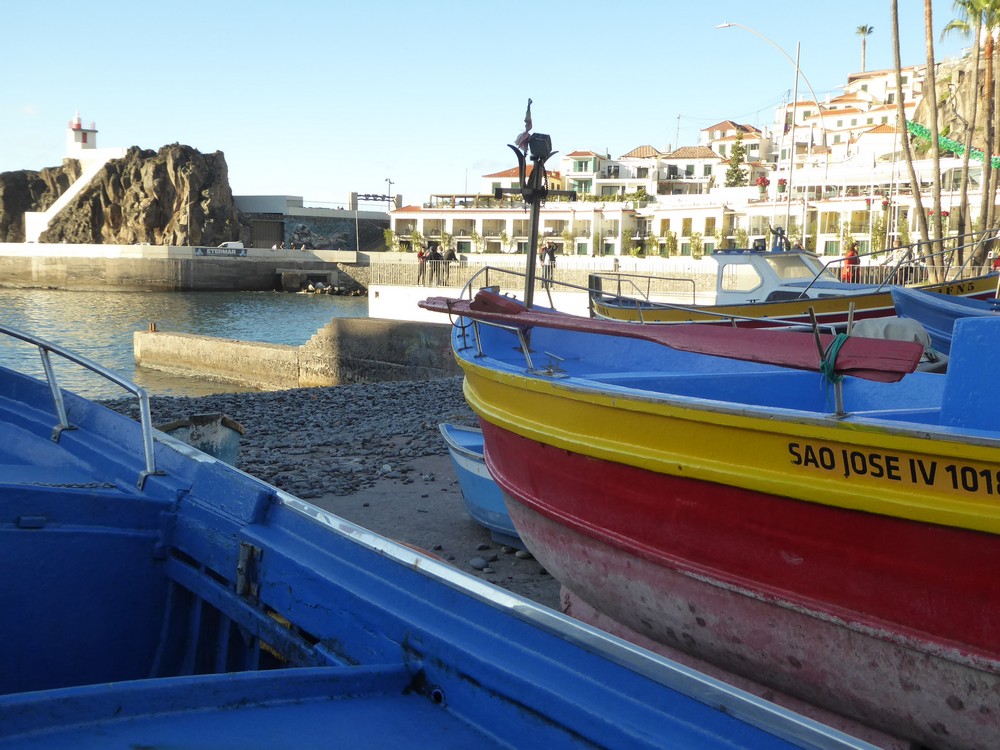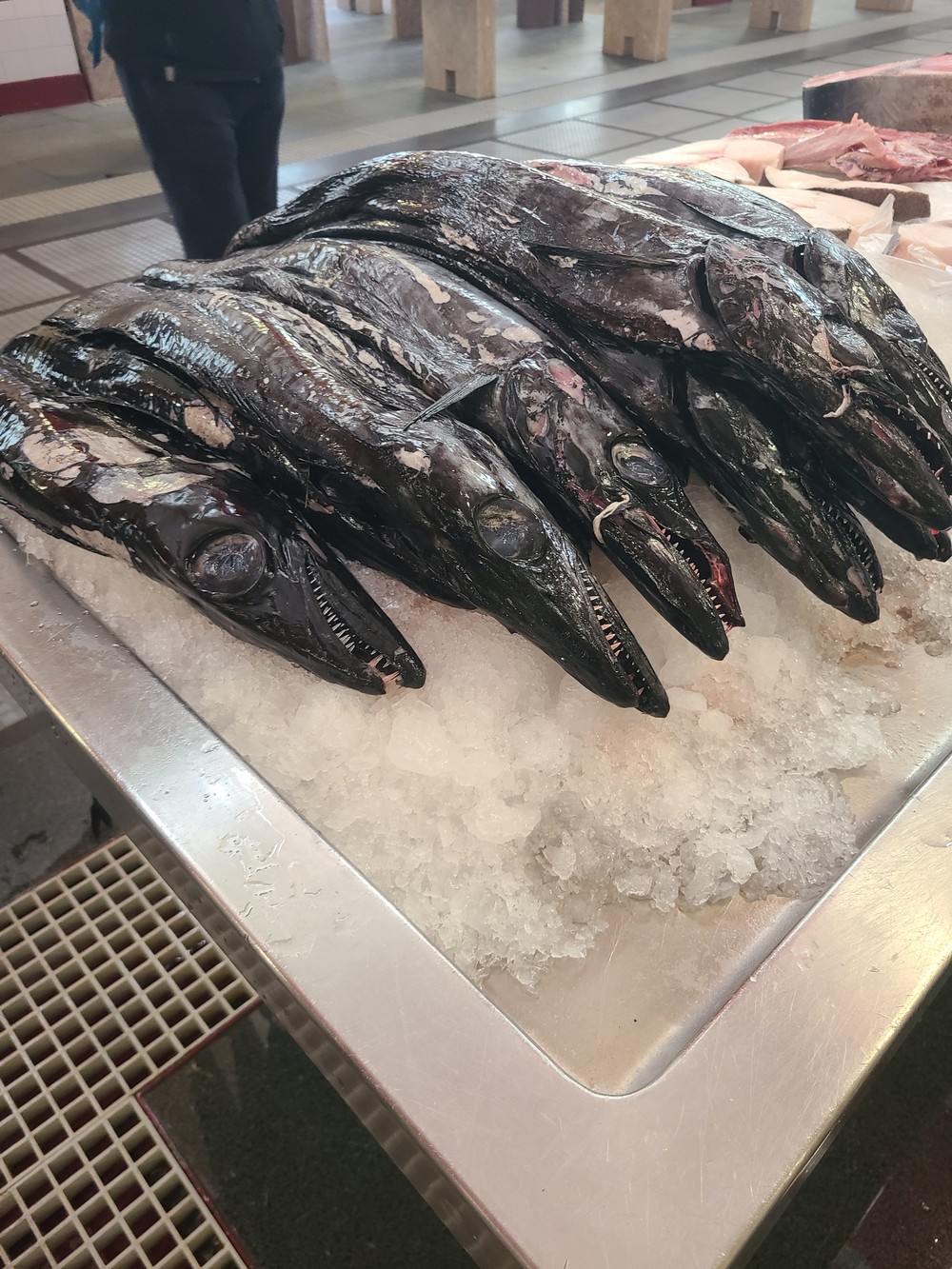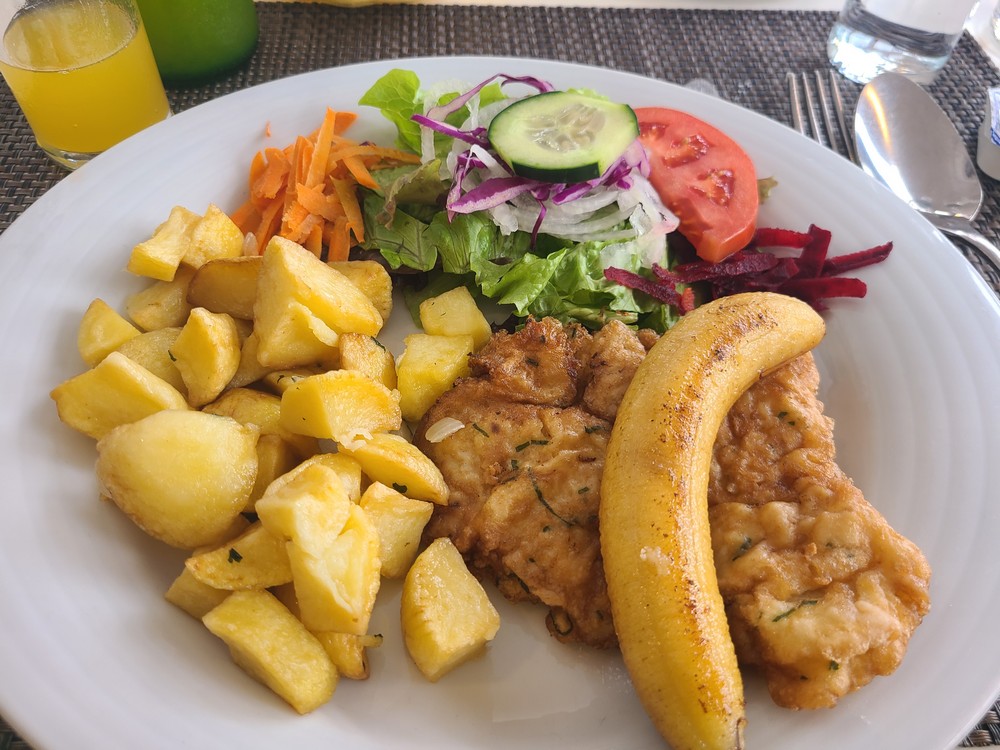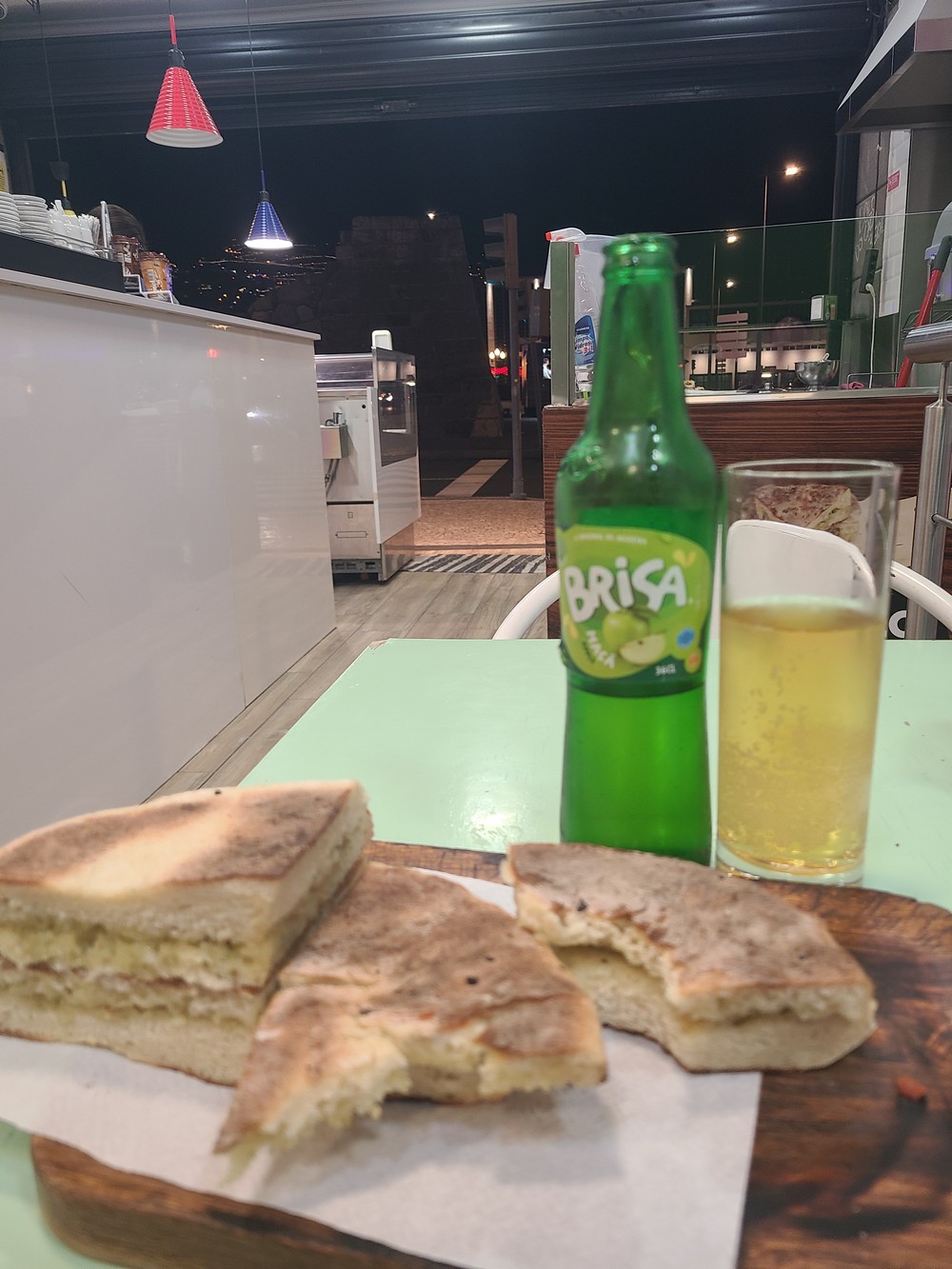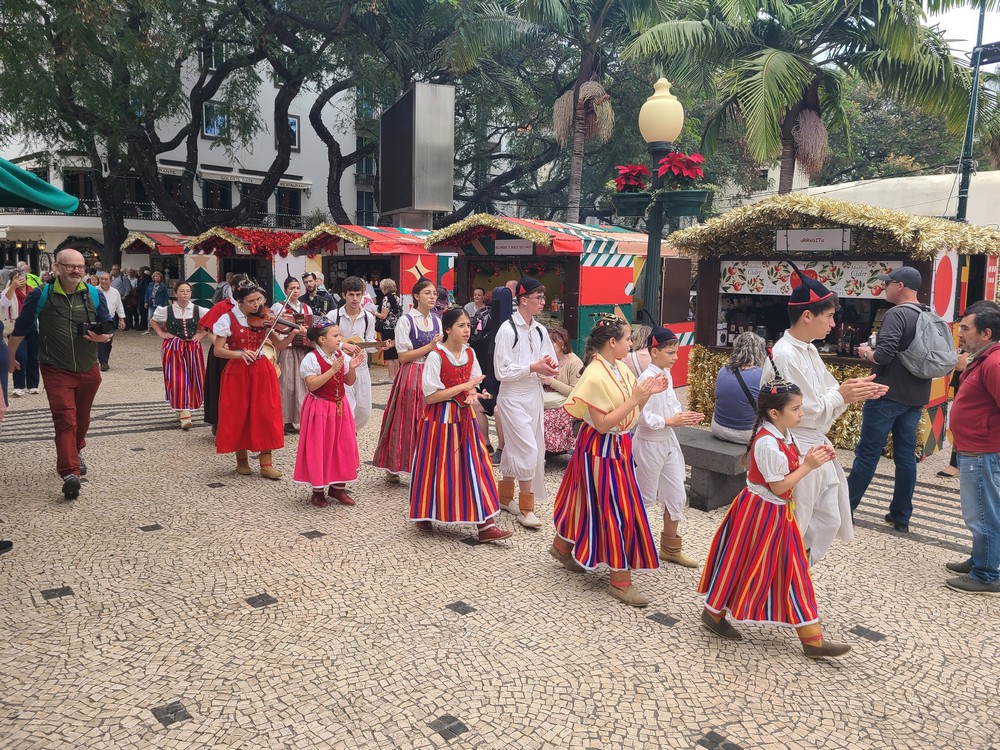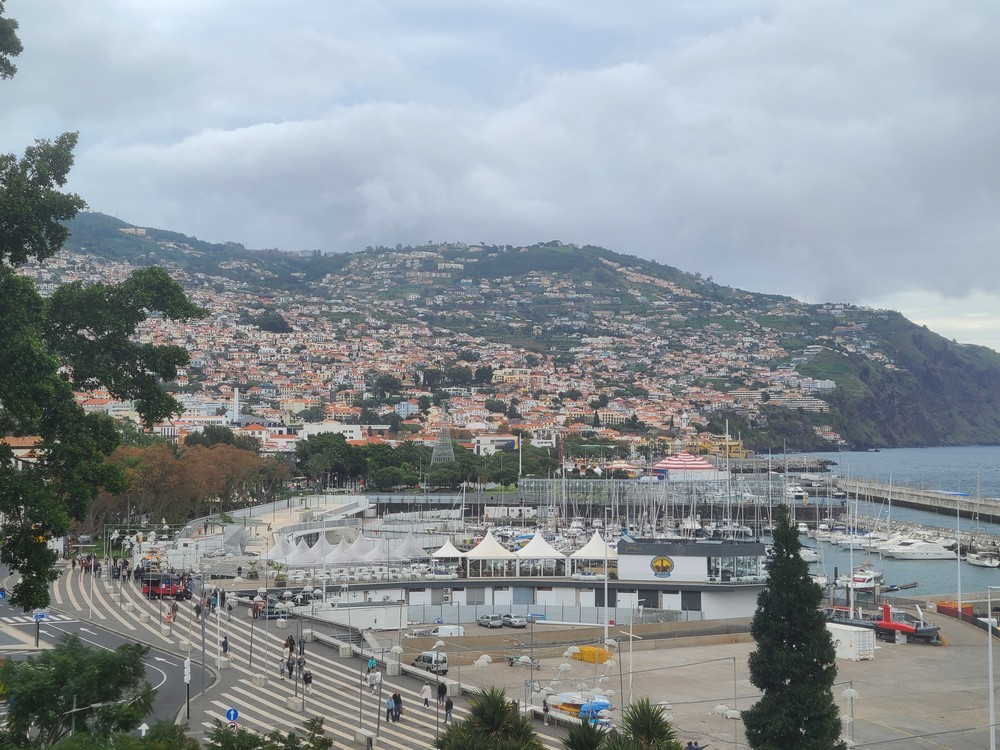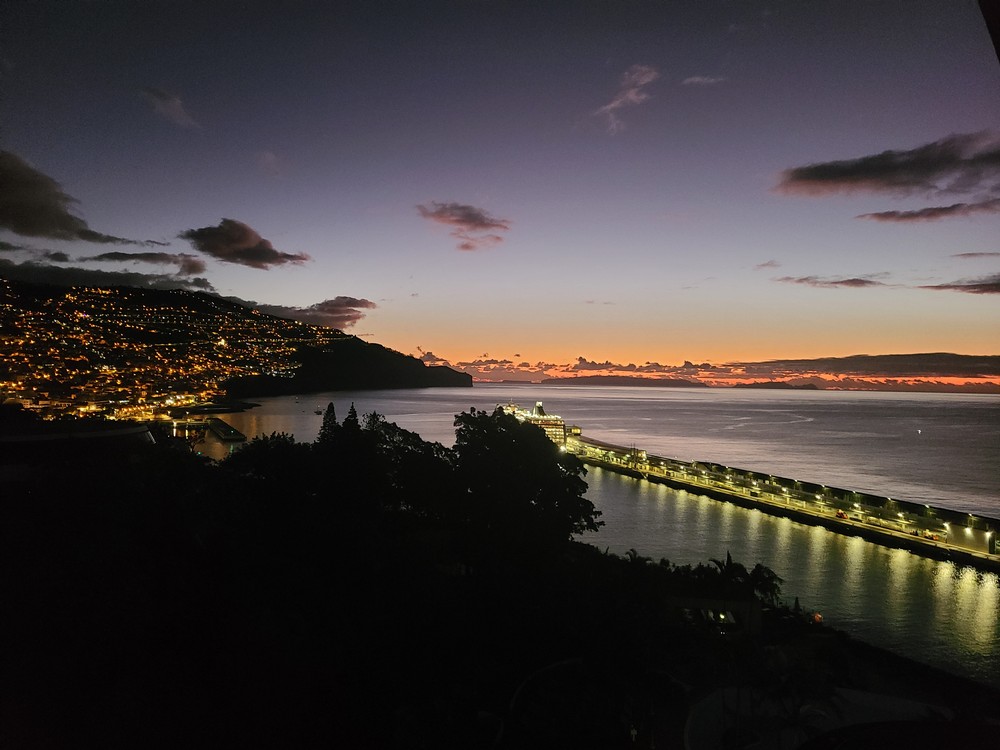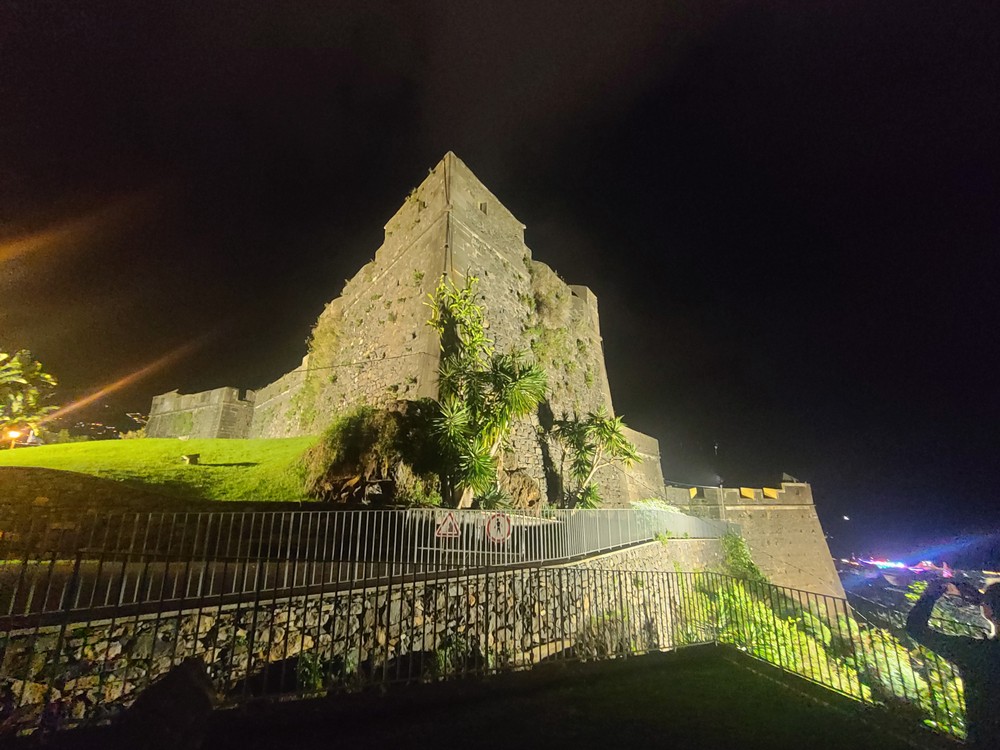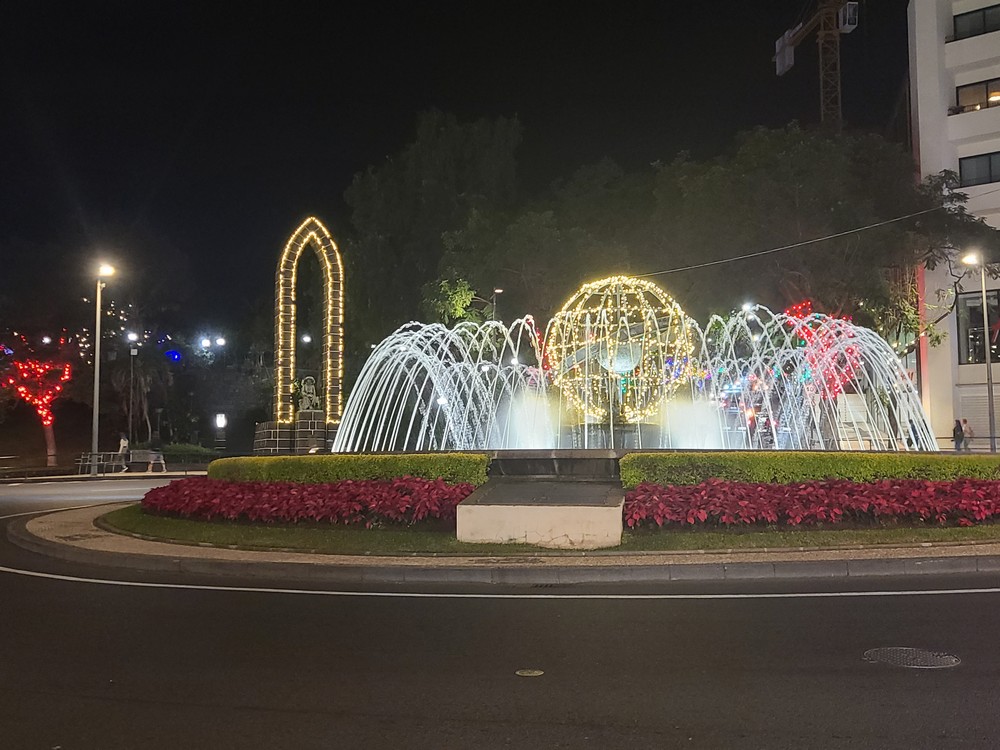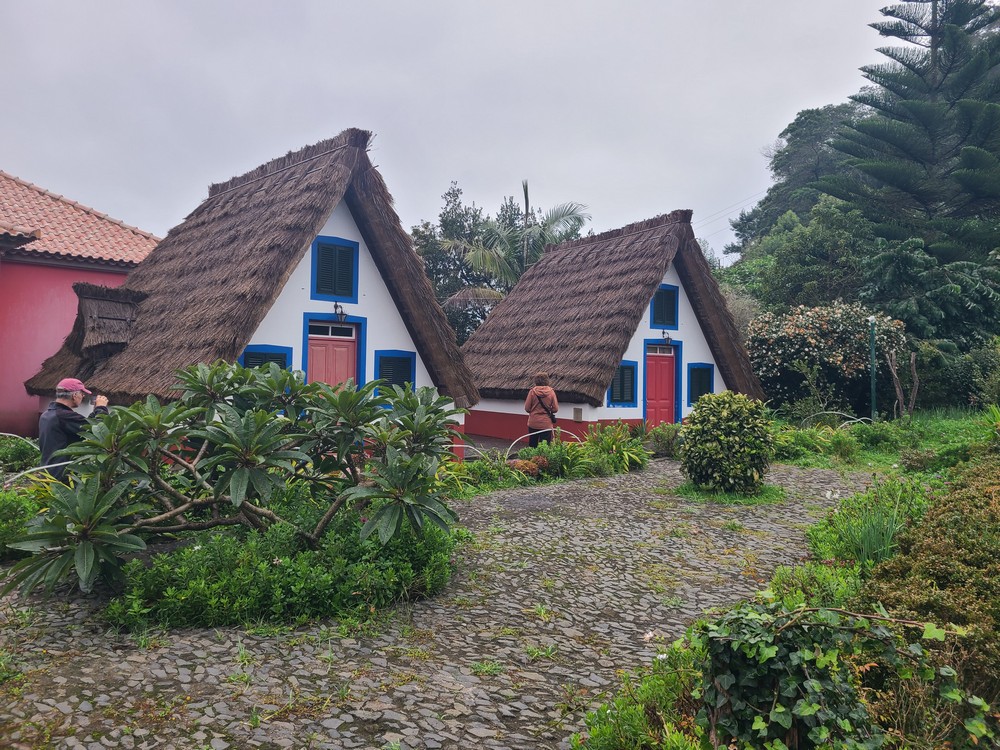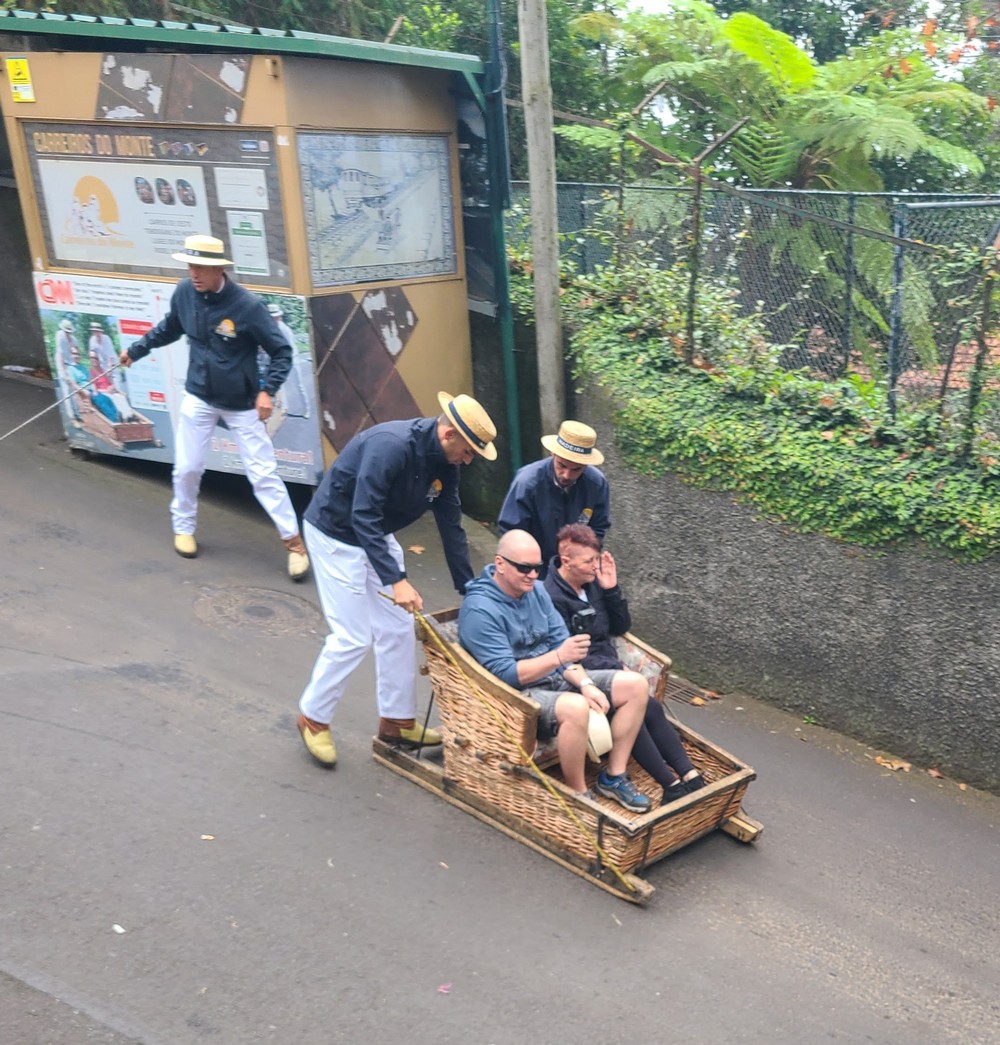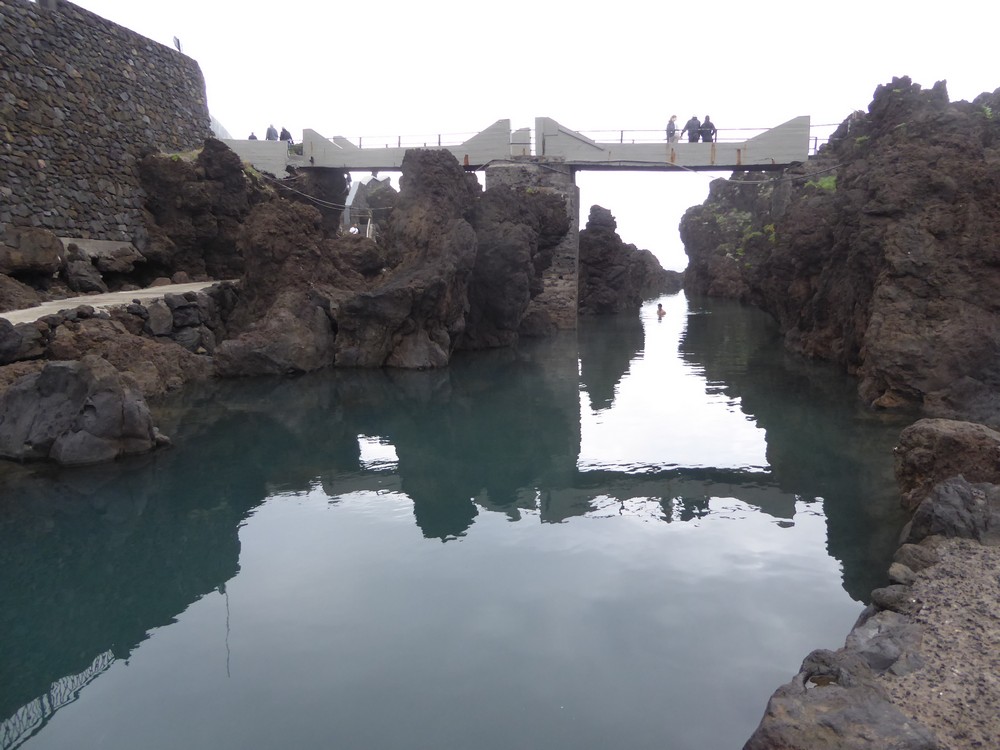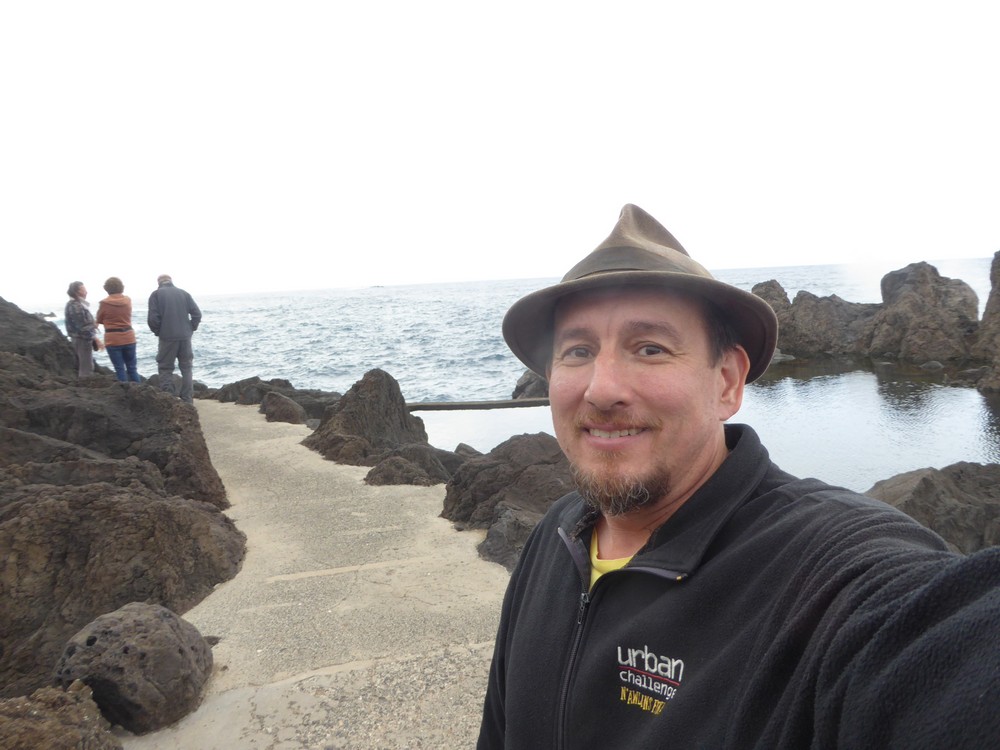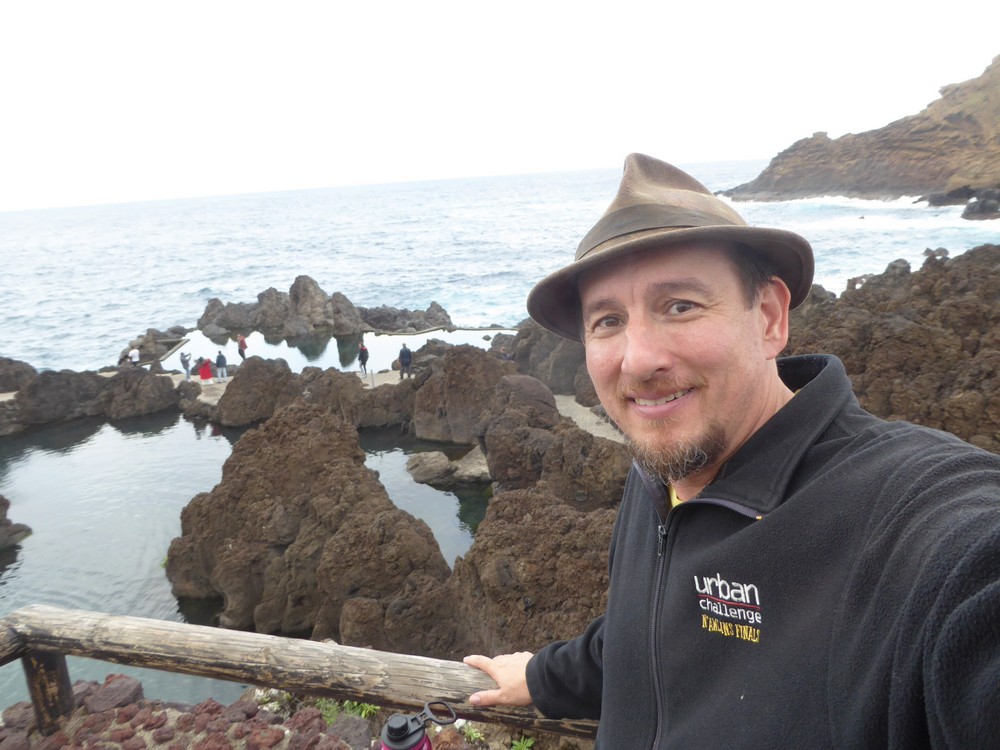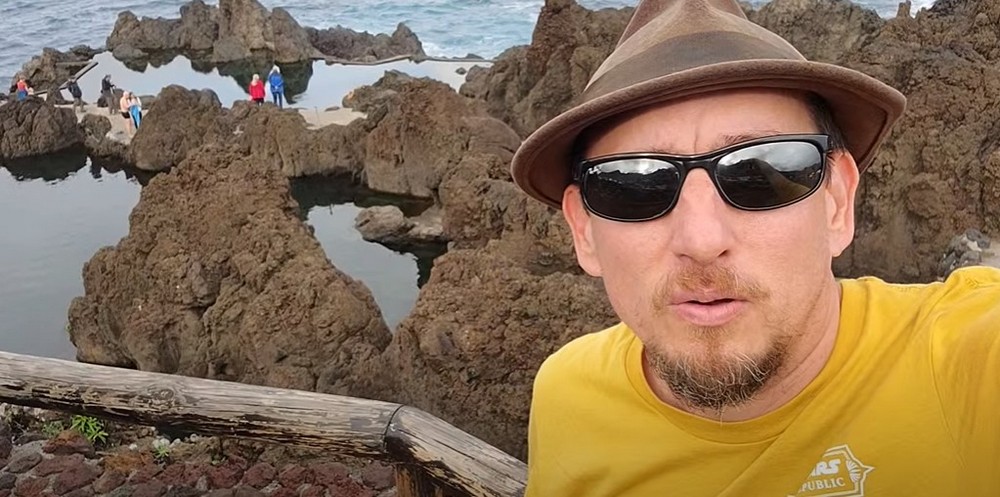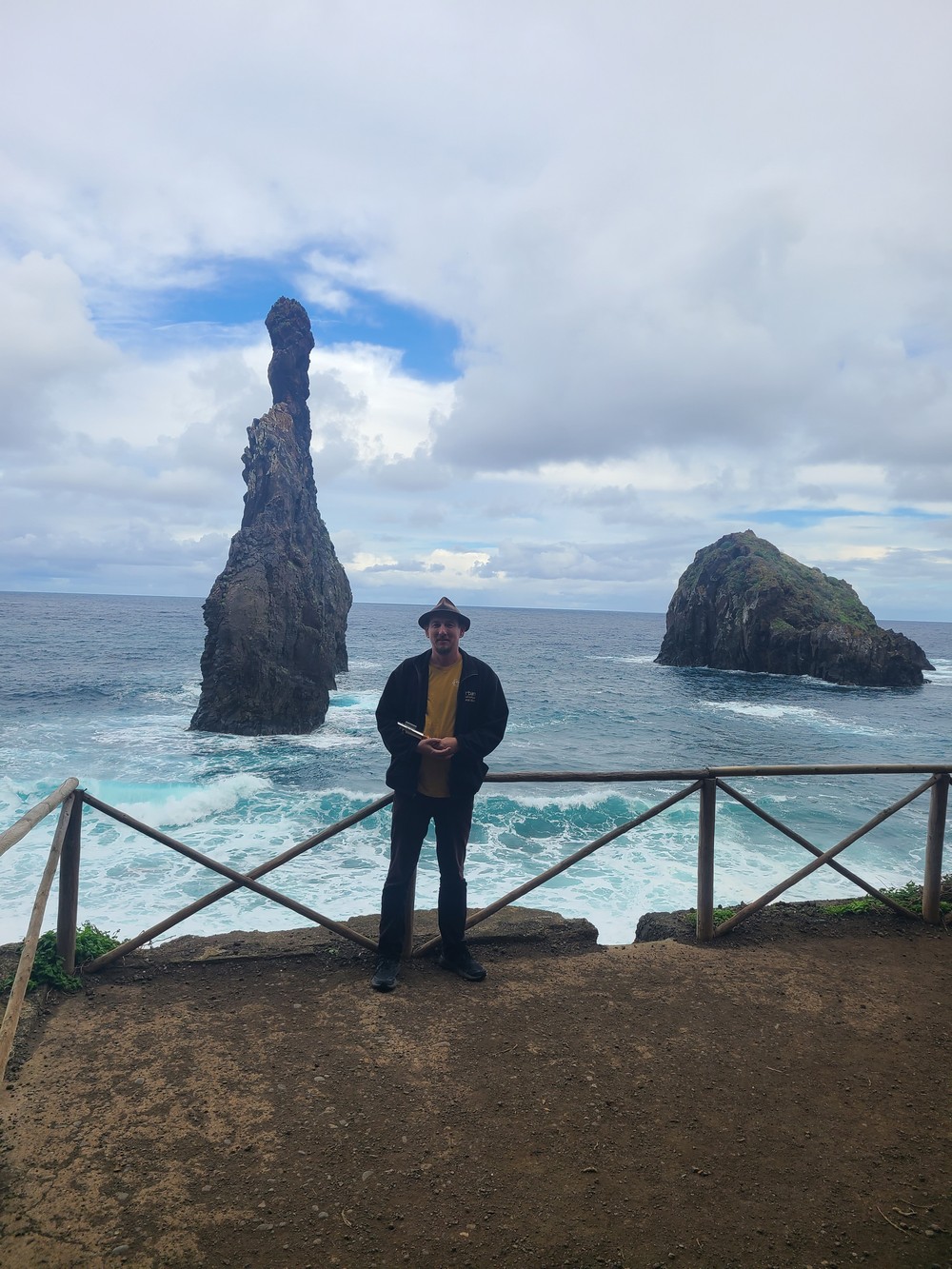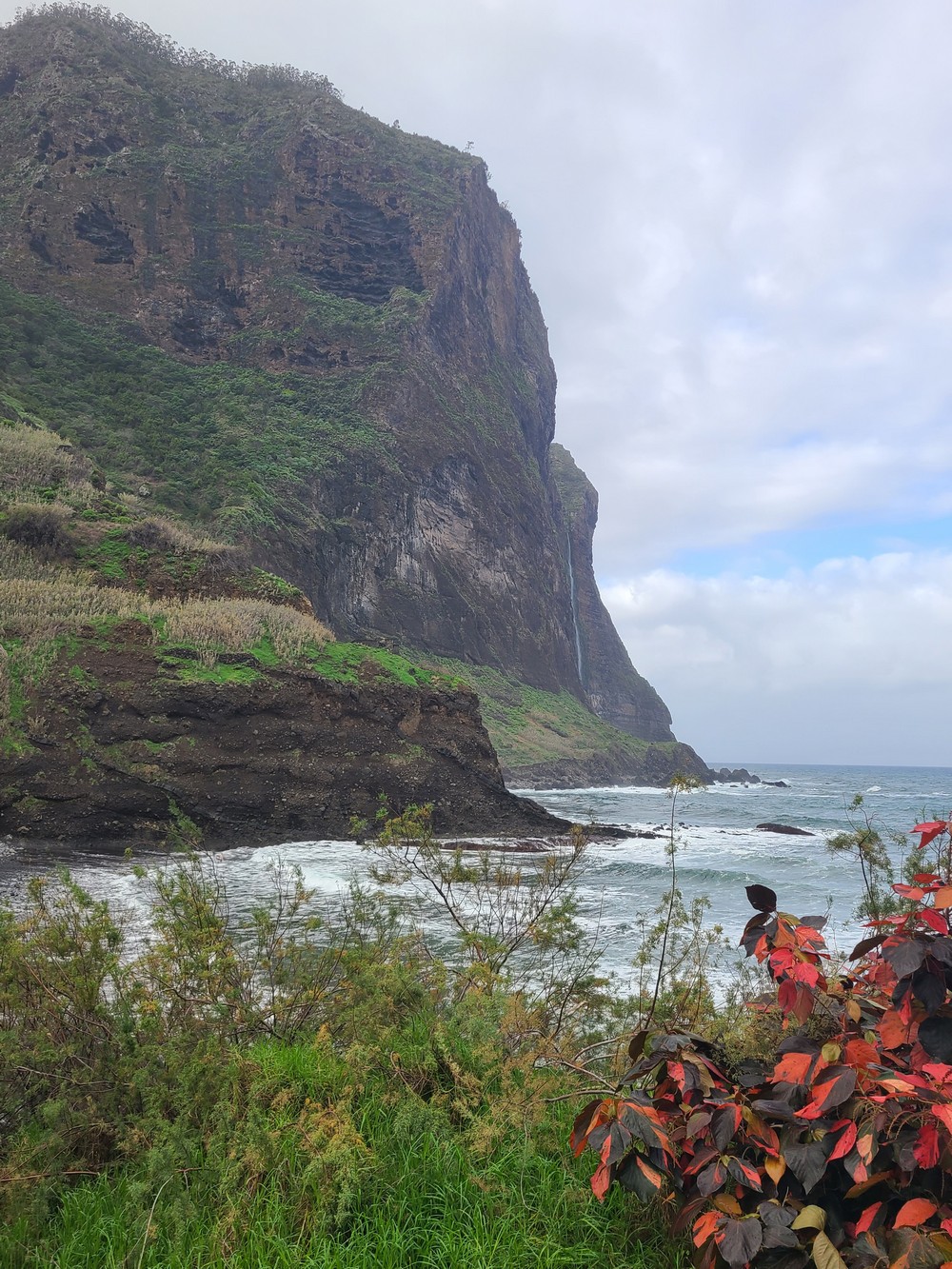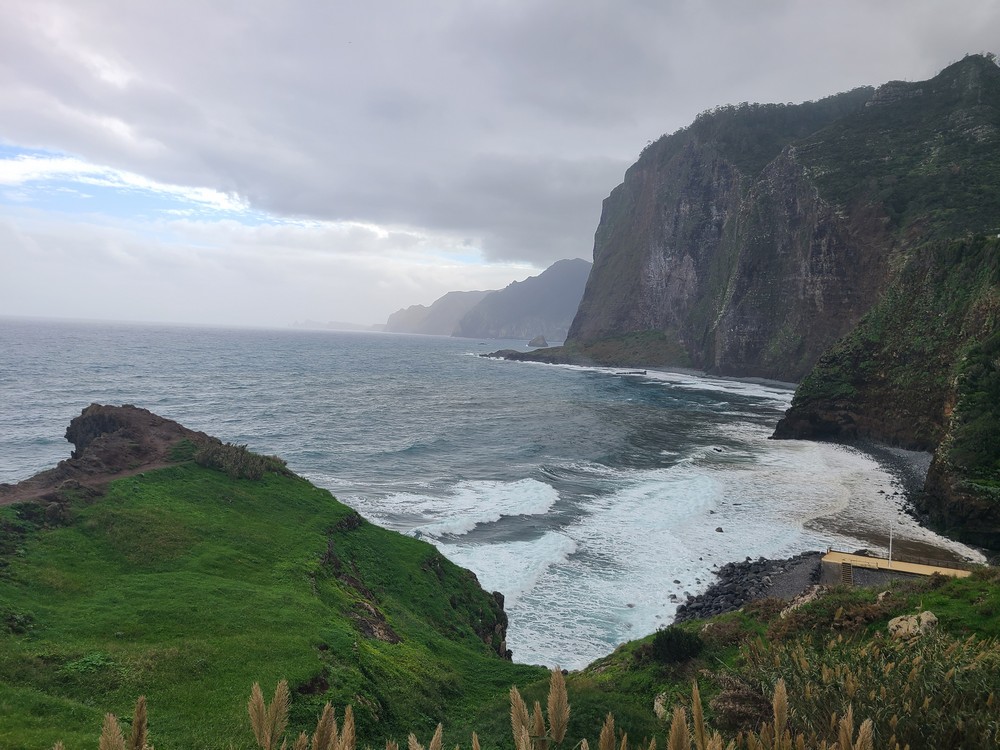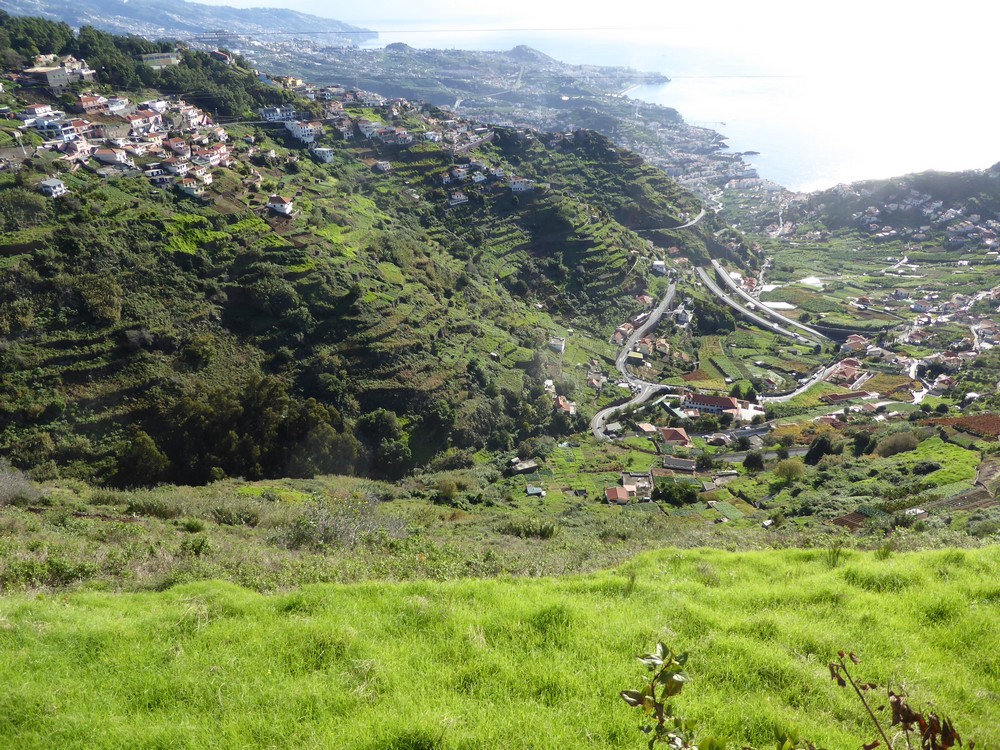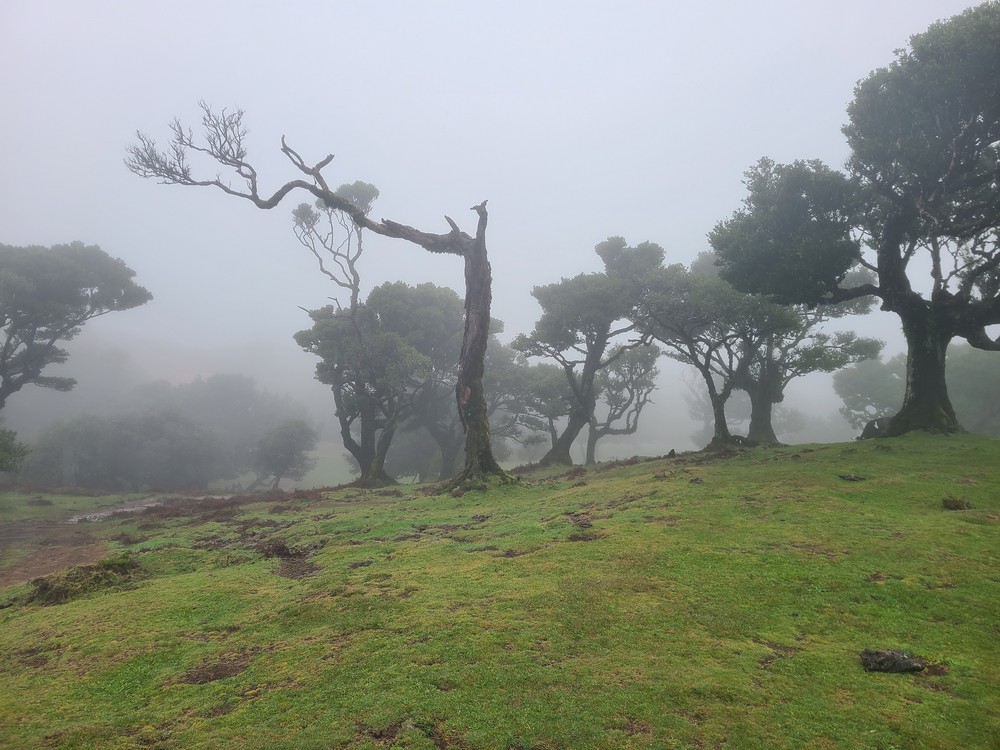Looking for an adventure that combines Star Wars and paradise? That’s what I was after when I visited Madeira last December. Not only is this Portuguese island a subtropical Eden filled with colorful seaside towns and beautiful wilderness, it serves as the home for filming four different planets in the recent Star Wars series, The Acolyte. While the show had plenty of both fans and detractors, you cannot deny the spectacularness of the wild scenery, and a lot of that is due to the choice of Madeira for filming.
The Acolyte was the first major international production to be filmed on the island, allowing audiences to see unfamiliar sights as worlds in the galaxy far, far away. The Unknown Planet’s lava rock pools where Osha catches the Stranger skinny dipping? I was determined to take a swim there – but with my trunks on! The Jedi’s hilltop landing site on Khofar and their trail down the slope? New comfy walking shoes laced up! The rocky coastal outcrops for the clifftop settlements on Ueda and Olega? Let’s get ready to hike! The streamside landing spot on Khofar where Mae and the Stranger park the Eclipse II? Time to poke around on abandoned terraces behind a small canyon village for it! The unique rock formations and stony shoreline outside the Stranger’s cave? I was ready to walk that beach and pop out of the cave like Darth Plagueis! Those giant flat-topped Khofar forests of incredibly straight trees? Well, those aren’t real at that height, but are based on the not-quite-as-tall eucalyptus forests all over the island.
Wanting to take a solo vacation as well as see (and share) some of the newest filming locations of the Star Wars universe, I booked a weeklong tour package with some day trips, but also gave me some extra days I could use just to visit the filming sites. Armed with Sander de Lange’s list of filming sites transformed into a map and screenshots printed and labelled, I was ready to line up individual shots from the episodes shot on Madeira. Some were at well known and easy to reach spots, like the natural pools at Porto Moniz, while others were a bit more…. nebulous as to where the exact shot was taken, especially when the image had been digitally altered for the show. My plan was to spend a few days on the group tour of the island with a buddy who wanted a break from the northern European winter chill, then spend my last two days having a private guide drive me all over the island to the various shooting sites.
In preparation for my trip, I talked with Gerardo Fernandes, the show’s line producer for Portugal. A longtime producer, this venture was the largest he had organized. But with years of extensive work on international productions in Portugal, Gerardo was a pro at the logistical aspects of filming. With the island having almost no film production capabilities, he started in October to oversee the enormous challenges of making sure everything necessary was there in time for filming January through March 2023. Besides the filming equipment from England, anything not available in the numbers they needed, like rental cars, trucks, and buses would have to be delivered by cargo ship from Portugal and Spain (and they needed dozens of vehicles). A cluster of hotels in the main city of Funchal was turned into both crew housing and production offices for every department, making it easy to coordinate everything. With an eye for preventing delays, every detail down to the last parking space needed to be planned.
Gerardo had an advantage – he had grown up on the island. Having been a producer there since 1988, he had a strong foundation to assist with navigating the filming process on Madeira. Plus, Gerardo knew the local food scene and he recommended a bunch of restaurants around the island, always good for the intergalactic gastronomes.
Sightseeing in Madeira in December
The first few days got me acquainted with the island. It was December, and Madeira goes all out for the Christmas season. I got my first taste of this, driving from the airport to Funchal on a Friday night, seeing lines of white lights crisscrossing the hillsides climbing up from the ocean. In every town I went to, the major avenues and roundabouts of the towns were decked out with colorful lights and displays. My first night, I wandered into Funchal’s Christmas market, right in the heart of the town, a few blocks from the waterfront boardwalk, and took in the sights and tastes, like “bolo do caco,” a round flatbread often grilled with garlic butter or made into a meat and cheese sandwich. Staying at the Hotel Pestana Casino Park, a large hotel on the hill above Funchal’s harbor and cruise ship terminal, I had a lovely view of the center of Funchal below, with neighborhoods climbing up the hillsides.
My friend and the other three members of our tour group assembled on Saturday for dinner at a nice Madeiran restaurant full of grilled meat on yard-long hanging skewers, Madeira’s famous Madeira sweet wine, and folk dancers in traditional garb. Sunday, Bruno, our tour guide took us around the east side of the island, first stopping in the pouring rain at a trout farm. It was there that I learned that my Star Wars Celebration Europe Return of the Jedi camouflage windbreaker was not waterproof. Luckily, at a stop at a rum factory, I was able to buy a decent rain slicker that magically drove away the rain for the rest of the day. We stopped at several cliffside “miradouros” or viewpoints, checking out seaside rock formations and waterfalls, and even spotted a surfer in a cove. A lunch stop in Santana introduced us to “espada” or black scabbardfish, a white fish often served with a banana or passionfruit sauce.
We also visited the traditional A-frame farmers houses that are the town’s signature attraction and learned about Madeiran Christmas celebrations – that day was the Feast of the Immaculate Conception, the second most important day in the Christmas season as its traditional start, complete with noisy church firecrackers and pig butchering. A final stop near Machico put us in range of Caniçal, and beyond that Ponta de São Lourenço, the dry grassy hilly peninsula that was used for the establishing shot of Ueda. My first Star Wars planet on the trip, though from a distance.
Monday morning we toured Funchal, seeing the public market, learning about Madeiran embroidery, and riding a wicker basket taboggan down 2km on city streets. Definitely worth it though the two steersman didn’t let me drift Fast and Furious style as much as I wanted. After a cable car ride back to the waterfront, my pal and I visited a historic fort, saw the painted doors of Zona Velha (Old Town), stopped by the Cristiano Ronaldo museum (he’s a hometown hero). Tuesday, Bruno took us to the west side of the island, stopping in the fishing village of Câmara de Lobos and the lofty sea cliffs at Cabo Girão, before taking us up the mountain into the foggy highlands of Fanal, where they filmed the Jedi landing and hiking scenes of Khofar.
Sadly, we didn’t get a chance then to really explore, and we drove onto Porto Moniz for lunch (fancier espada) and visiting the natural pools – where they filmed the Stranger (played by Manny Jacinto) bathing when visited by Osha (Amandla Stenberg). It was really cool, and not hard to find the exact pool used in the show. The natural pools are really lava rock formations that are dammed off at the ocean’s edge, allowing for still ocean waters above the crashing waves, with an infinity pool effect. No time to swim, but I’d be back on my private tour. A few more seaside viewpoints of cliffs and waterfalls, and some “poncha”, a tropical fruit punch spiked with rum, made up fresh to order, and then back to Funchal and pubbing with some British guys I had just met.
Traveler’s Basic Info to Madeira
Madeira Island is part of Portugal, but is in the Atlantic Ocean off the coast of Morocco in Africa and north of Spain’s Canary Islands. Formed by a volcano, the island is mountainous, with many rivers cutting canyons down to the coast. The upland interior of the island is protected wilderness, leaving pristine mountains and forests for hiking. Most of the towns are along the coast, built up on terraces onto the surrounding hillsides. The island has several microclimates, from sunny and dry coasts to temperate rain forests to foggy scrublands – it can be foggy or have an occasional winter snow at the highest elevations, while remain hot and sunkissed by the ocean. Much of the coast is rocky cliffs, some with exciting arches and other formations, and more stony beaches than sandy ones. Water temperatures are warm throughout the year.
The island has a total population of 250,000 with about half of its residents in the capital city of Funchal. Madeira is connected by air via Cristiano Ronaldo Airport (FNC), which gets flights from Portugal, the UK and other places in Europe. It is also a popular port for cruise ships also visiting the Canary Islands, Azores or making transatlantic voyages. While maintaining its historic charm, Madeira has many hotels and short term vacation rentals, especially along the sunnier south coast. A modern set of motorways and tunnels crisscross the island, making exploring the island easy and quick to get around these days.
While Portuguese is the official language, English is commonly spoken, due to its long history of English settlers and its popularity as a tourist and retirement destination for many Europeans. The euro is the main currency and credit cards and cash are both commonly accepted. Though it has much in common with mainland Portugal, Madeira, as a historical center of Atlantic trade, has its own unique culture, reflected in the traditions and cuisine. In short, for Americans like me – imagine quaint walkable European seaside towns, but on a Hawaiian island, full of terraces of bananas, sugar cane, and wine grapes.
Gerardo’s Restaurant Recommendations
Funchal:
· Taberna Ruel (tabernaruel.com) – Traditional meat and seafood, in the heart of Funchal’s Old Town
· Lá Ao Fundo – Fine Dining in Old Town
· A Vista – Fine Dining in the neighborhood of São Martinho by a Michelin 2-Star chef
· Doca do Cavacas – seafood restaurant right above some natural pools in São Martinho
Porto Moniz:
· Cachalote (restaurantecachalote.com) – Traditional Madeiran and seafood, just above the Porto Moniz natural pools. This is the restaurant that had to be hidden from shots in The Acolyte.
Câmara de Lobos:
· Vila do Peixe (www.viladopeixe.com) – seafood restaurant with a view of the harbor of the fishing village
Estreito de Câmara de Lobos:
· Viola – traditional Madeiran cuisine, including espetada (giant grilled skewers of beef)
· As Vides – traditional Madeiran cuisine, including espetada and bolo do caco
Camacha:
· Abrigo do Pastor (www.abrigodopastor.com) – Traditional dining up in the mountains
Machico:
· MaréAlta – waterfront restaurant known for its fish and seafood
Porto da Cruz:
· Snack Bar A Pipa (facebook.com/SnackBarAPipa) – Madeiran seafood a stone’s throw from the water in a small town
Be sure to come back next week for part 2 of James’ journey to Madeira.


